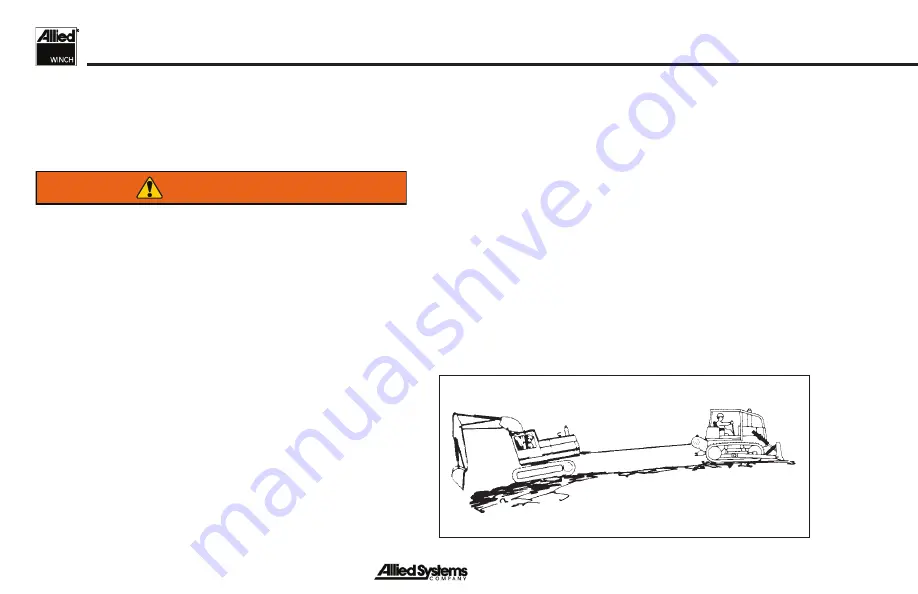
36
Figure 18 - Moving a Disabled Vehicle (Step B)
B.
A tractor or skidder equipped with a winch can be used
to pull another vehicle from mud or other areas where it
cannot move using only the drive wheels or tracks. See
Figure 18. Use the following procedure:
WARNING
Use extra care if the traction conditions are
bad or if the vehicles are on a slope. Bad
traction can cause the disabled vehicle
or the tractor to slide. A slope can require
additional distance to stop the vehicles.
Make sure the wire rope and tow chain have
the capacity to do the job. If the disabled
vehicle does not have a tow pin or other
equipment for towing, carefully fasten the
tow chain around the axle of the disabled
vehicle. Make sure the tow chain is fastened
so that the chain will not cause injury to
people or damage the vehicle.
An operator must be on the disabled vehicle
to operate the steering and brakes as it is
towed.
1. Fasten the winch wire rope to the tow bar of the other
vehicle. The wire rope must be in a direction that is
approximately parallel to the direction of travel of the
vehicle. Apply the brakes on the tractor or skidder. Use
the throttle to set the engine speed at a power level to
operate the winch. (Operator experience is required,
because the winch can use most of the engine power
in some vehicles.)
2. Put the control lever in the
LINE-IN
position to tighten
the winch wire rope. When the winch wire rope is tight,
use the power from the engine to the winch to pull
the vehicle from the bad area. If the disabled vehicle
moves under its own power, keep the towing wire
rope tight so that the wire rope does not pass under
the drive wheels or tracks of the vehicle being towed.
Summary of Contents for AW3CP1A1556R11
Page 13: ...xi Safety Summary Notes ...
Page 14: ...xii Notes ...
Page 24: ...10 Intentionally Blank ...
Page 32: ...18 Intentionally Blank ...
Page 38: ...24 Figure 16 PFR Control Lever Disassembly and Adjustments ...
Page 40: ...26 Intentionally Blank ...
Page 44: ...30 Intentionally Blank ...
Page 48: ...34 Intentionally Blank ...
Page 54: ...40 Intentionally Blank ...
Page 57: ...43 Operational Differences Optional Equipment Notes ...
Page 58: ...44 Notes ...
Page 59: ......
































